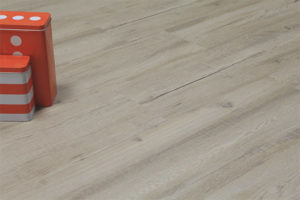The content of the article
Brick masonry is popular everywhere regardless of the place of construction, while not only the masonry methods differ, but also the materials used in it. For example, as part of the construction of one house, or a particular room taken, up to three different types of bricks can be used, which require mortar for masonry of various composition and consistency.
Properties and characteristics of mortar for masonry
In order to qualitatively provide its functions, namely, to keep the wall elements in a bound state and to ensure its strength, the mortar for bricklaying should have a number of properties. Some of them are necessary to facilitate the work with the composition, while others provide stability and attractiveness of the structure obtained during its use.
Among these properties, the following characteristics are distinguished:
- viscosity;
- plastic;
- tear density;
- mobility;
- hardness.
The combination of these factors that the dry mixture receives and with it the finished solution forms a parameter, which is called the brand. It depends on it in buildings, what type it can be changed, and what proportions of ingredients will be contained in it. Each brand has its own serial number. So, there are such brands:
- M4;
- M10;
- M25;
- M50;
- M75;
- M100;
- M150;
- M200.
Some of them are applicable only for internal work, in particular, for the creation of interior ceilings (the lowest brands). Others, on the contrary, are used exclusively for outdoor work, for example, to create basement levels, where the solution must be resistant to washing out by groundwater.
The components of the mixture and their basic proportions
The basis of any bonding solution, including for bricklaying, is made up of various varieties of Portland cement. But it can also be replaced with slag cement, which is used less often. In addition to cement, the composition of the dry mixture necessarily includes filler, most often sand, and plasticizers. Clay and lime are used as them. Their presence in the solution is not necessary, but provides additional properties to the composition.
There is a direct relationship between the first component and the brand of solution. The higher the grade of the mixture is needed, the higher the grade of cement will be required. But for sand, this dependence is changing. The lower the grade of mortar, the more sand there will be in it with similar proportions and the grade of cement.
Sand is applied river or quarry. The second option is much more preferable, since impurities and inclusions, such as stones and plant roots, are much less common in it. The sand is considered optimal with a fraction size of up to 2 mm.
Another component is lime. Its presence in the solution provides the necessary viscosity and ductility, which ultimately reduces the number of cracks that tend to form in the masonry. The amount of lime in the solution can be equal to the amount of cement depending on the brand, but usually it is much lower.
Clay in the mixture as well as lime adds flexibility to the solution. Moreover, solutions with its content have a lower stratification coefficient due to the retention of moisture in the solution. Similar solutions are also used in masonry, where brick is also used.
Applicable tools and equipment
There are two ways to knead a solution. The first classic - with bare hands, the other modern - using automated technology.The second option is preferable, since it does not require excessive efforts on the part of the master. The technique does most of the work, freeing your hands from grueling operations. For this purpose, a construction mixer is suitable, in other words, a concrete mixer. Now they come in different capacities, so you need to choose it based on the amount of work. So, too small a tool will constantly work in order to make the next batch and consume a large amount of electricity, while an excessively large one will stand idle.
If you do it yourself, you will need a tank of sufficient volume, for example, a trough or basin, a trowel (trowel) for kneading, a bucket for measuring liquid and bulk ingredients, and additional tools. For example, you might need a construction sieve to sift sand. This will remove unnecessary inclusions from it, such as stones, construction or household waste. Also, in some cases they manage to introduce agricultural equipment, for example, hoes for kneading the solution, into the work. But an ordinary shovel also copes with this situation.
In rare cases, the construction mixer will save the situation, but it must have a high enough power so as not to burn out when mixing a thick solution.
Mortar mixing technology for masonry
The most important thing in the process of obtaining the solution is to follow the order of adding the components. With the right kneading, a part of the water is first poured into the mixing tank, after which a mixture of cement and dry lime is added. Ideally, use special equipment for this, as lime adversely affects the skin. It is advisable to use protective clothing. However, it is most important to observe the order of the components during manual kneading, as added in the wrong order they will require more effort on the part of the master to knead.
After adding cement and lime (if necessary), an initial batch is carried out. Then gradually sand and water are introduced into the mixture. According to the technology, the water should be clean and cold. Knead the composition to obtain a homogeneous mixture of the necessary mobility. The mobility varies depending on the brick used in the masonry. A more mobile solution is used for a full-bodied brick, and for a hollow one - less mobile. It should be noted that at high ambient temperatures the solution should also be more mobile in order to ensure its working qualities.
The most convenient ready-made dry building mixes for work. They already contain the necessary proportions of components, balanced among themselves. In addition, some manufacturers in addition to the main ingredients add special chemical additives that improve the composition. Their use saves time, but often they are more expensive than separately purchased components.
Mortar for masonry without cement
This version of the mixture is used only for specific purposes, for example, for masonry furnaces. This solution consists of only three components:
- clay;
- sand;
- water.
Their proportions are very arbitrary, because clays come in varying degrees of fat content. All other ingredients, or rather, their amount is selected depending on the quality of the clay. At optimal normal fat content, a part or two of sand is used on a part of clay. Four times more water is required. If the clay is oily - the amount of sand is increased to a ratio of 1: 5 or 1: 4. Also, the skinny clay added will correct the situation. Otherwise, if the fat content is low, slaked lime is added to the mixture.
The cooking technology is also somewhat different. Initially, the clay is soaked in water to soften, after breaking it into small pieces. It takes 3 to 12 hours to complete this process. So, clay is poured with water, and from time to time mix.Upon receipt of a dense homogeneous or exfoliated mass, the solution is filtered through a construction sieve with a 3x3 mm cell, and only then mixed with sand in predetermined proportions.
The resulting mixture was brought to a homogeneous consistency, mixing with a convenient tool. If the mixture does not have the necessary density, it is diluted with water or sand is added. As a rule, quarry sand is used for such a solution, but fireclay sand is also allowed.
In conclusion, it is worth noting that the ancient tribes of South America managed to build brick structures of the cult with sufficient stability without the use of mortars, ensuring that these architectural monuments are surprised to this day. However, such buildings do not meet modern requirements and in order to achieve the optimum quality of the building, it is extremely necessary to use binding solutions, the information on which is presented above.
Video: preparing a solution for masonry stoves












Submit